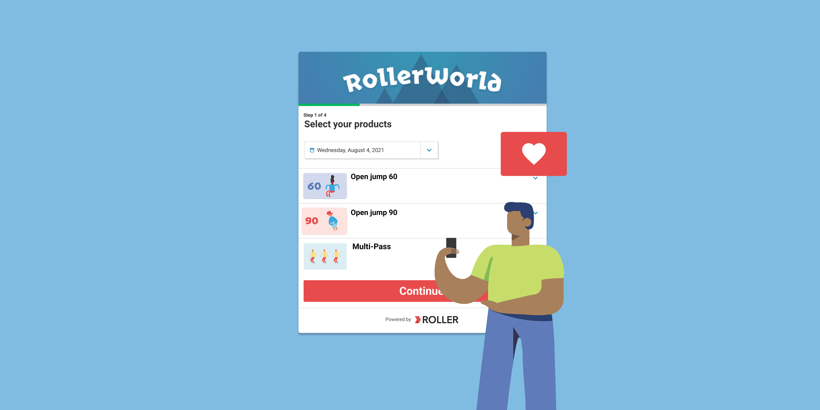Does your online checkout really impact conversion rates?

You’ve captured your guest’s attention. You’ve piqued their interest, and better yet, they have decided that they’re going to visit your venue. All that’s left to do is to secure their commitment through their ticket purchase. That’s the easy part, right? The hard work is done, isn’t it?
This is where you might be losing business without even realizing it. They visit your website, they're excited, they like what you've got to offer, and want to book. Now that you've done the hard work of convincing prospective guests to spend their disposable time and income with you, you need to make sure that they follow through on their intent to complete a purchase. For that reason, it's critical to ensure that your checkout page is optimized for a seamless guest experience, otherwise you'll run the risk of prospective guests becoming frustrated when trying to complete a purchase and abandoning altogether.
If someone bounces off your checkout page, they had an intention to purchase, and they then clicked out of it. A negative or frustrating on-page experience often causes this. This can be caused by an overwhelming user experience, one that requires excessive text or scrolling just to get to the point of purchase. It can also be the number and types of products presented to the guest as they are reviewing their options which can confuse guests when attempting to select an option. When they bounce from the purchase page, the cart is abandoned. For those who decide to come back, the process begins again of convincing them to buy, yet it’s an uphill battle because of their previous negative experience?
How can you minimize abandoned carts in a way that positively impacts conversions? There are a couple of ways in particular that ROLLER is designed to address this directly. Specifically, the way information and products are positioned must be done in a way that maintains engagement through the entire process.
1) Information must be carefully positioned
The first is related to the page's layout when the guest is checking out, and specifically how much information is on that page. There is a lot of information that your guests need to know, but overwhelming them with text is a surefire way to boost your rate of cart abandonment. Instead, make the text brief and concise, and stick to the essentials for what the guest needs to know to book. For example, when guests book a birthday party online, they’ll need to see the variety of flavors of cake that you offer… but that’s not needed until after they transact. Once the guest has transacted, then you can continue the conversation by allowing them to select their flavor.
When guests may be curious to learn more about specific products or items, condense the text and give them an option to expand it to read more at their convenience. At the same time, those who are ready to buy can quickly navigate to checking out. Your goal should be to keep the total transaction time under two minutes.
Due to ROLLER’s checkout style and experience, venues that switch to ROLLER often see upwards of a 10-15% increase in online sales. While some of these sales may have shifted from onsite to online, even if a small percentage of abandoned carts were salvaged, it adds up to significant revenue.
2) Products must be carefully positioned
Another way to minimize abandoned carts has to do with the number and types of presented offerings. Often, venues will want to present every single option to every guest, and if there are a wide variety of options, this can be overwhelming. Instead, present the correct products to the correct guests by taking them on a journey that matches who they are based on their previous selections. If a guest has selected to view membership options, they do not need to be shown options for daily admissions and vice versa. By carefully curating the products that are shown to the guest, you can personalize the guest experience through your online checkout. This makes this easier for the guest, but it can also influence higher spending. Once the ticket options are selected, presenting the guest with applicable add-ons can increase the transaction size.
Due to how ROLLER positions products to guests, venues that switch to ROLLER see an increase in their average transaction size by 10-14%. When you give the guest agency over their purchase experience, they can take as much time as they need without feeling the pressure of a queue building behind them. It also reduces your labor requirement when the guest is in the driver’s seat, rather than staffing a full team of ticket sellers. While you still should offer tickets onsite, your goal should be to shift as much as possible to guests buying online in advance.
When your guests buy online instead of onsite, it secures their commitment to visit. When the checkout is designed with the guest in mind, it can increase your attendance and your per capita spending, letting you spend more time doing what you set out to do: deliver fantastic experiences that make lifelong memories for your guests.
Enhance your guest experience
Get free education, tips and inspiration to help you run a successful venue.